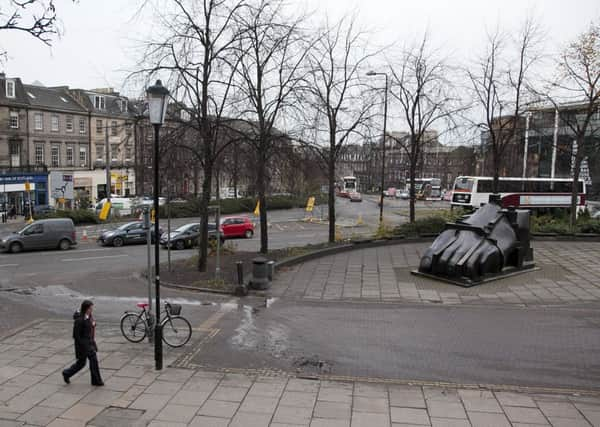Campaigners attack plans for top of Leith Walk


Pedestrians’ group Living Streets Edinburgh want the proposal for a triangular island surrounded by three lanes of traffic scrapped and replaced by a “people-friendly” layout.
And in a formal submission, the group says the level of consultation on the plans has been “most unsatisfactory”.
Advertisement
Hide AdAdvertisement
Hide AdThe plans to redesign the junction at Picardy Place as part of the St James Quarter development provoked outrage from pedestrian and cycle campaigners when details emerged in September. The council has since made some changes to the proposals.
But the submission from Living Streets said: “The ‘ground rules’ seem to have been set dating back to the tram proposals from 2009.
“There is a lack of transparency about the relationship between the council and the developer, with big decisions on traffic and parking being taken behind closed doors before local people and citizens as a whole can have their say.
“The council appears to be constrained in its transport decision-making by a historical agreement with the developer which was not open to public scrutiny.
Advertisement
Hide AdAdvertisement
Hide Ad“The council’s latest consultation has only been tinkering at the edges of the traffic scheme, with the central component – the gyratory – evidently not up for discussion.”
A funding agreement with the developer and the Scottish Government is understood to mean changing the design would cost the council more than £20 million.
Living Streets said the gyratory was “entirely inconsistent” with the council’s own transport strategy because it was designed to accommodate traffic rather than restrain it.
David Spaven, convener of Living Streets Edinburgh, said: “The current scheme is a traffic plan, but it should be a people-friendly plan. The council has an overall aim of reducing the car’s share of Edinburgh’s transport, but sticking with a three-lane gyratory would simply encourage yet more cars.”
Advertisement
Hide AdAdvertisement
Hide AdHe said London was removing major gyratory roundabouts because of their impact on pedestrians and cyclists, adding: “It would be tragic if Edinburgh were to head in the opposite direction, endorsing discredited 1960s approaches to urban transport planning.”
The group said the gyratory plan meant “multi-stage, inconvenient pedestrian crossings”.
They also complained of too many narrow sections of pavement, too much shared space between pedestrians and cyclists, and called for an improved bus/tram interchange.
Transport and environment convener Lesley Macinnes said the designs aimed to improve safety for pedestrians and cyclists while facilitating public transport.
Advertisement
Hide AdAdvertisement
Hide Ad“They have evolved significantly since first principles were agreed in 2009,” she said.
The consultation closes on Friday and the issue will then be discussed at a special transport committee meeting on January 25.